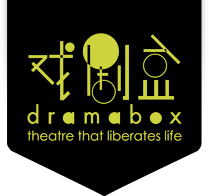
December 2011
A Brief History of Singapore Chinese Language Theatre — Of Playwrights
| Pre-War | 1910s – 1930s | Modern Drama (initially known as "new drama" (xin ju) or "spoken drama" (hua ju). Known simply as "drama" or "theatre" after the 1980s to better embody the nature of "modern drama") was introduced in Singapore. Most of these dramas were staged for fund-raising purposes. They were either of Chinese or Western origins; some were adapted from folk tales while others were original creations—and their qualities varied. |
|---|---|---|
| 1930s – 1940s |
The Singapore-Malayan Chinese literary scene started a literary movement to introduce "Nanyang flavour" into local literature, and to advocate literary works that replicate reality.
From 1937 (The Marco Polo Bridge Incident in China) till 1942 (before the fall of Singapore), all plays were created with the theme of war resistance. There was an increasing number of plays set in Singapore, while those set in China became less common. |
|
| 1940s | During the Japanese Occupation from 1942 to 1945, the number of drama plays plummeted. Those that continued operated as underground activities. | |
| Post-War | 1950s – 1960s |
Local amateur theatre groups were set up one after another, corresponding with a surge in nationalistic sentiments among the people. These theatre groups staged more and more local plays.
In the 60s, influenced by the Cultural Revolution in China, most of the plays focused on issues surrounding social stratification and class division. |
| 1970s | In the mid and late 70s, some theatre practitioners were detained under the Internal Security Act for accusations of being involved in subversive activities. Drama activities dipped to a low. | |
| 1980s |
Drama activities made a recovery and entered a new era.
Theatre practitioners started exploring possibilities of multi-language dramas, and broke away from the linear style of narration.
In terms of theatre aesthetics, local theatre practitioners began experimenting with forms and styles after exchanges with regional theatre practitioners from Taiwan, Hong Kong, China and Malaysia. From then on, directors started to replace playwrights in taking charge of creative directions. |
|
| 1990s – 2000s |
In the 90s, The Theatre Practice started classes to train playwrights, in view of a shortage in local scripts. Female playwrights began emerging as a result, publishing plays like My Mother's Chest and The Next Generations etc. After which, more female playwrights broke into the theatre circuit, and the subject of their plays are not restricted to "feminist issues".
Towards the 21st century, dramas began to reflect more on urbanisation and gender issues. There is still a shortage of local playwrights and to address this, Drama Box started the Blanc Space Playwright Series. |
 Quote "Friend of Drama Box" before your order to enjoy a 10% discount off food and beverages at CrazyWorld Café. Promotion ends 31 December 2011.
Quote "Friend of Drama Box" before your order to enjoy a 10% discount off food and beverages at CrazyWorld Café. Promotion ends 31 December 2011.
